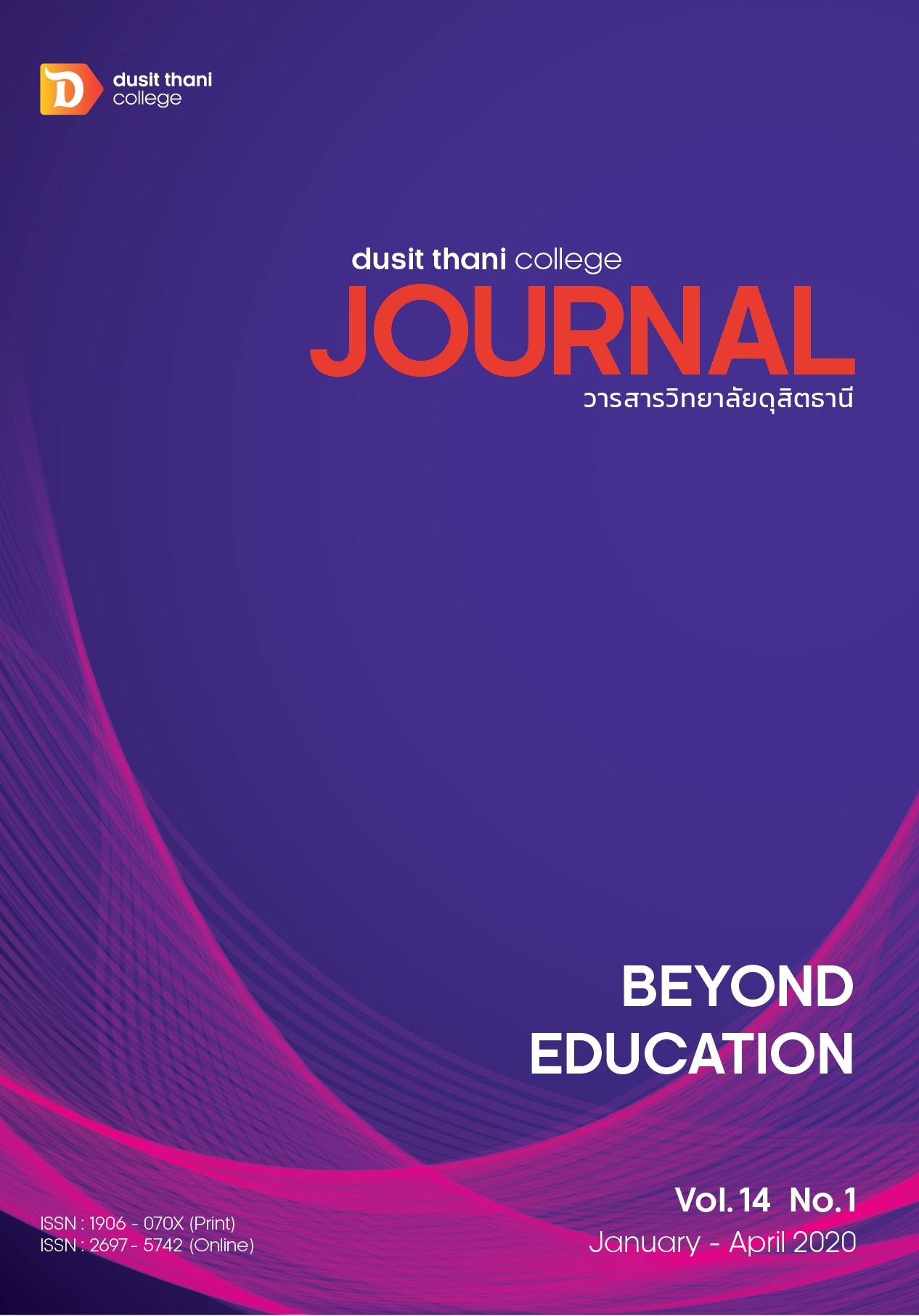คุณประโยชน์ของเพคตินจากอาหารเหลือทิ้ง
Main Article Content
บทคัดย่อ
บทความนี้มีวัตถุประสงค์เพื่อให้ความรู้เกี่ยวกับคุณประโยชน์ของสารเพคตินที่ได้จากอาหารเหลือทิ้ง และแนะนำแนวทางในการนำสารเพคตินไปใช้ประโยชน์ เศษอาหารเหลือทิ้งจากการบริโภคและการแปรรูปนั้นล้วนเป็นสิ่งที่หลีกเลี่ยงไม่ได้ ส่วนใหญ่มักมาจากเปลือกผักและผลไม้ที่อุดมไปด้วยสารประกอบทางชีวภาพต่าง ๆ ที่ล้วนเป็นประโยชน์ต่อร่างกายมนุษย์ เช่น ใยอาหาร สารต้านอนุมูลอิสระ สารพฤกษเคมีต่าง ๆ เป็นต้น โดยองค์ประกอบหลักของเปลือกผักและผลไม้เหล่านี้ คือ คาร์โบไฮเดรตเชิงซ้อนที่เรียกว่า เพคติน ทำหน้าที่เป็นสารเกิดเจลและเพิ่มความหนืดในอาหารได้ นอกจากนั้นเพคตินยังเป็นใยอาหารชนิดละลายน้ำที่มีส่วนสำคัญต่อร่างกาย ทั้งช่วยควบคุมระดับน้ำตาลในกระแสเลือด ลดระดับคอเลสเตอรอลในร่างกาย ช่วยปรับสมดุลของระบบทางเดินอาหารและระบบขับถ่าย ซึ่งเพคตินจากอาหารเหลือทิ้งสามารถประยุกต์ใช้ทั้งในด้านอุตสาหกรรมอาหารและช่วยส่งเสริมสุขภาพได้
Article Details
นโยบายการพิจารณากลั่นกรองบทความ
- บทความวิจัยและบทความวิชาการทุกเรื่องที่จะได้รับการตีพิมพ์ต้องผ่านการพิจารณากลั่นกรองโดยผู้ทรงคุณวุฒิ (Peer Review) ในสาขาที่เกี่ยวข้อง จำนวน 3 ท่าน/บทความ
- บทความ ข้อความ ภาพประกอบและตารางประกอบที่ลงตีพิมพ์ในวารสารเป็นความคิดเห็นส่วนตัวของผู้เขียน กองบรรณาธิการไม่จำเป็นต้องเห็นด้วยเสมอไป และไม่มีส่วนรับผิดชอบใด ๆ ถือเป็นความรับผิดชอบของผู้เขียนแต่เพียงผู้เดียว
- บทความที่จะได้รับการตีพิมพ์จะต้องไม่เคยตีพิมพ์ เผยแพร่ที่ใดมาก่อน และไม่อยู่ระหว่างการพิจารณาของวารสารฉบับอื่น หากตรวจสอบพบว่ามีการตีพิมพ์ซ้ำซ้อน ถือเป็นความรับผิดชอบของผู้เขียนแต่เพียงผู้เดียว
- บทความใดที่ผู้อ่านเห็นว่าได้มีการลอกเลียนหรือแอบอ้างโดยปราศจากการอ้างอิง หรือทำให้เข้าใจผิดว่าเป็นผลงานของผู้เขียน กรุณาแจ้งให้กองบรรณาธิการวารสารทราบจะเป็นพระคุณยิ่ง
เอกสารอ้างอิง
2. Chotiko, A., & Sathivel, S. (2016). Development of a combined low-methoxyl-pectin and rice-bran-extract delivery system to improve the viability of Lactobacillus plantarum under acid and bile conditions. LWT-Food Science and Technology, 66, 420 - 427.
3. De Laurentiis, V., Corrado, S., & Sala, S. (2018). Quantifying household waste of fresh fruit and vegetables in the EU. Waste Management, 77, 238 - 251.
4. Dranca, F., & Oroian, M. (2018). Extraction, purification and characterization of pectin from alternative sources with potential technological applications. Food Res Int, 113, 327 - 350.
5. Einhorn-Stoll, U. (2018). Pectin-water interactions in foods - From powder to gel. Food Hydrocolloids, 78, 109 - 119.
6. Endreß, H. U., & Christensen, S. H. (2009). Pectins. In Handbook of Hydrocolloids (pp. 274 - 297).
7. Kim, M. Y., Lim, S. H., & Lee, J. (2014). Intake of hot water-extracted apple protects against myocardial injury by inhibiting apoptosis in an ischemia/reperfusion rat model. Nutr Res, 34(11), 951 - 960.
8. Krzeminski, A., Prell, K. A., Busch-Stockfisch, M., Weiss, J., & Hinrichs, J. (2014). Whey protein–pectin complexes as new texturising elements in fat-reduced yoghurt systems. International Dairy Journal, 36(2), 118 - 127.
9. Marić, M., Grassino, A. N., Zhu, Z., Barba, F. J., Brnčić, M., & Rimac Brnčić, S. (2018). An overview of the traditional and innovative approaches for pectin extraction from plant food wastes and by-products: Ultrasound-, microwaves-, and enzyme-assisted extraction. Trends in Food Science & Technology, 76, 28 - 37.
10. Min, B., Bae, I. Y., Lee, H. G., Yoo, S.-H., & Lee, S. (2010). Utilization of pectin-enriched materials from apple pomace as a fat replacer in a model food system. Bioresource technology, 101(14), 5414 - 5418.
11. Mirabella, N., Castellani, V., & Sala, S. (2014). Current options for the valorization of food manufacturing waste: a review. Journal of Cleaner Production, 65, 28 - 41.
12. Nannyonga, S., Mantzouridou, F., Naziri, E., Goode, K., Fryer, P., & Robbins, P. (2018). Comparative analysis of banana waste bioengineering into animal feeds and fertilizers. Bioresource Technology Reports, 2, 107 - 114.
13. Nazir, A., Asghar, A., & Aslam Maan, A. (2017). Food Gels: Gelling Process and New Applications. In Advances in Food Rheology and Its Applications (pp. 335 - 353).
14. Ong, K. L., Kaur, G., Pensupa, N., Uisan, K., & Lin, C. S. K. (2018). Trends in food waste valorization for the production of chemicals, materials and fuels: Case study South and Southeast Asia. Bioresour Technol, 248, 100 - 112.
15. Stenmarck, Å., Jensen, C., Quested, T., & Moates, G. (2016). Estimates of European food waste levels. Stockholm FUSIONS project.
16. Sundar Raj, A., Rubila, S., Jayabalan, R., & Ranganathan, T. (2012). A review on pectin: Chemistry due to general properties of pectin and its pharmaceutical uses. Scientific reports, 1, 550 - 551.
17. Thi, N. B., Kumar, G., & Lin, C. Y. (2015). An overview of food waste management in developing countries: Current status and future perspective. J Environ Manage, 157, 220 - 229.
18. Thibault, J.-F., & Ralet, M.-C. (2008). Pectins, their Origin, Structure and Functions. In B. V. Macleary & L. Prosky (Eds.).
19. Voo, W.-P., Ravindra, P., Tey, B.-T., & Chan, E.-S. (2011). Comparison of alginate and pectin based beads for production of poultry probiotic cells. J Biosci Bioeng, 111(3), 294 - 299.
20. Wichienchot, S., Jatupornpipat, M., & Rastall, R. A. (2010). Oligosaccharides of pitaya (dragon fruit) flesh and their prebiotic properties. Food Chemistry, 120(3), 850 - 857.


